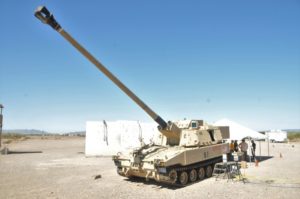
The Army’s lead for Long Range Precision Fires (LRPF) modernization said Monday the service is beginning to seek industry’s input on support for the Extended Range Cannon Artillery (ERCA) autoloader and the Precision Strike Missile’s (PrSM) multi-mode seeker. Brig. Gen. John Rafferty, director of the LRPF Cross-Functional Team, also told attendees during a Heritage Foundation online event his team is also interested in exploring technologies that will allow future submunitions for ERCA to “connect and collaborate.” Rafferty reiterated that an…

 By
By 











